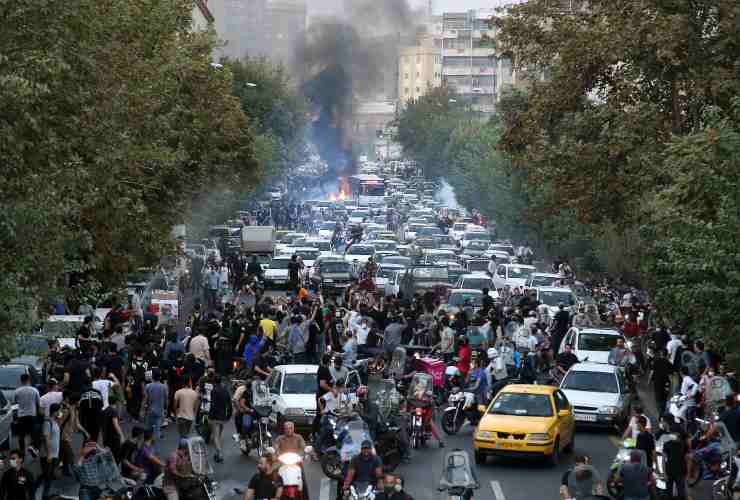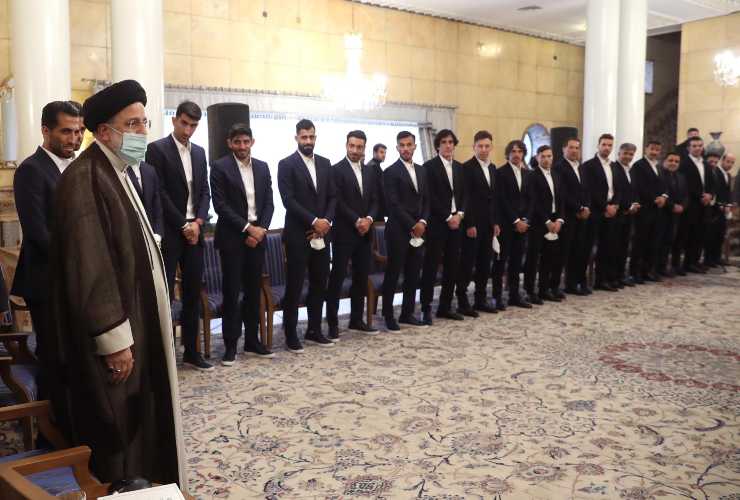Iran is on fire. The popular uprising that began after the death of young Mahsa Amini in mid-September has spread to many parts of the country. We do not know if the ayatollahs’ regime is on the verge of collapse, but this hypothesis is beginning to gain ground.
On the night of November 17 to 18, during a new wave of protests, demonstrators set fire to the birthplace of the father of the Islamic revolution: Ayatollah Khomeini. It happened in Khomein, the city where the founder of the Islamic Republic of Iran was born. Khomeini’s birthplace has been a museum for 30 years. Many images shared on social networks show the building on fire, targeted by Molotov cocktails. The previous night, demonstrators had attacked another symbol of the mullahs’ power. This is the religious seminary of Izeh, a city in Khuzestan, in southwestern Iran. There, in recent days, protests against the Islamic regime have erupted into violent clashes with police.
 Video image from Twitter of the fire at the Khomeini House Museum in Iran. Photo Ansa
Video image from Twitter of the fire at the Khomeini House Museum in Iran. Photo Ansa
Gunmen on motorcycles killed 9 people in two separate attacks, authorities said. Which speak of “a terrorist group which took advantage of a gathering of demonstrators” to shoot, writes the official agency Irna. There are 7 victims including a 45-year-old woman, two children aged 10 and 13 and a policeman. It is the second attack in two months that authorities have attributed to suspected “terrorists” after 13 people were killed at a shrine in the southern city of Shiraz on October 26.
Iran, situation out of control
But in Iran the social and political situation is collapsing, in the virtual indifference of the world. For more than two months, the country has been traversed by a protest movement led by young people and women, who are demanding an end to the theocracy in power since 1979. They are also demanding civil rights and political freedoms, the end of the sexual segregation. and heavy restrictions on women’s freedom.
 In Iran, protests against the regime have been going on since September. Photo Ansa
In Iran, protests against the regime have been going on since September. Photo Ansa
The protests involve different social sectors in different regions of Iran. However, they are mainly concentrated in the north, in the Kurdish and Azerbaijani areas. And in the capital Tehran. In some towns, marches degenerated into violent clashes with security forces. So far, the repression has been very harsh: 344 dead, including at least 20 police officers, according to human rights organizations. Among the victims are also dozens of minors, including children. And we are talking about at least 14,000 arrested. Thanks also to the intense work of Farnesina, the Iranian authorities released a few days ago the young Roman Alessia Piperno, 30, who was arrested at the end of September along with other foreign citizens under the false accusation of being a “spy “.
 Iranian President Ebrahim Raisi during a meeting with members of the national football team before their departure for the World Cup in Qatar. Iranian footballers may not sing national anthem in protest
Iranian President Ebrahim Raisi during a meeting with members of the national football team before their departure for the World Cup in Qatar. Iranian footballers may not sing national anthem in protest